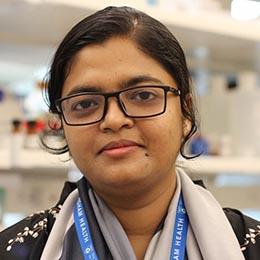From Networks to Subtypes: Statistical Frameworks for Mechanistic Insights into Complex Disease Genetics
Complex diseases often arise from diverse genetic mechanisms acting through interconnected pathways and frequently encompass multiple hidden subtypes that share similar diagnostic features but have distinct genetic origins. Naturally, this raises two key questions: how can we move beyond single-gene associations to uncover mechanistic links to disease, and how can we identify latent, clinically meaningful subtype structure within complex disorders? Traditional analyses struggle to answer both. In this talk, I will present two approaches that bring a systems perspective to human genetics. First, I will introduce NERINE, a network-aware rare variant testing framework that integrates gene-gene interaction topology into a hierarchical model. By embedding human genetic variation within gene networks, NERINE enables competitive evaluation of biological hypotheses, achieving higher power and interpretability than traditional burden tests. Applied to both canonical pathway databases and experimentally derived networks, NERINE reveals novel disease mechanisms in breast cancer, type II diabetes, cardiovascular disease, and Parkinson’s disease (PD) across biobanks. In PD, rare variant associations identified by NERINE converge with a genome-scale CRISPRi screen in iPSC-derived neuronal models of synucleinopathies, revealing a mechanistic role for PRL in the α-synuclein stress response. Next, I will present Checkers, a new method for detecting genetic subtypes of complex diseases directly from genotype data. Using eigenanalysis under a liability threshold model, I will show that when subtypes arise from distinct underlying liabilities, a mixed disease cohort exhibits predictable low-dimensional patterns of sample relatedness at causal variants that can be detected without phenotypic or omics covariates. Checkers couples a novel matrix transformation to correct for sample kinship and linkage disequilibrium in controls with a statistical test on the eigenvalue distribution to estimate the number of disease subtypes. Our method effectively disentangles mixtures of binarized quantitative traits in the UK Biobank and provides a general framework for understanding disease heterogeneity. Together, these studies illustrate how network-aware and structure-aware computational frameworks can unify experimental and population-level perspectives, illuminating both the mechanistic architecture and hidden subtypes of human disease.

